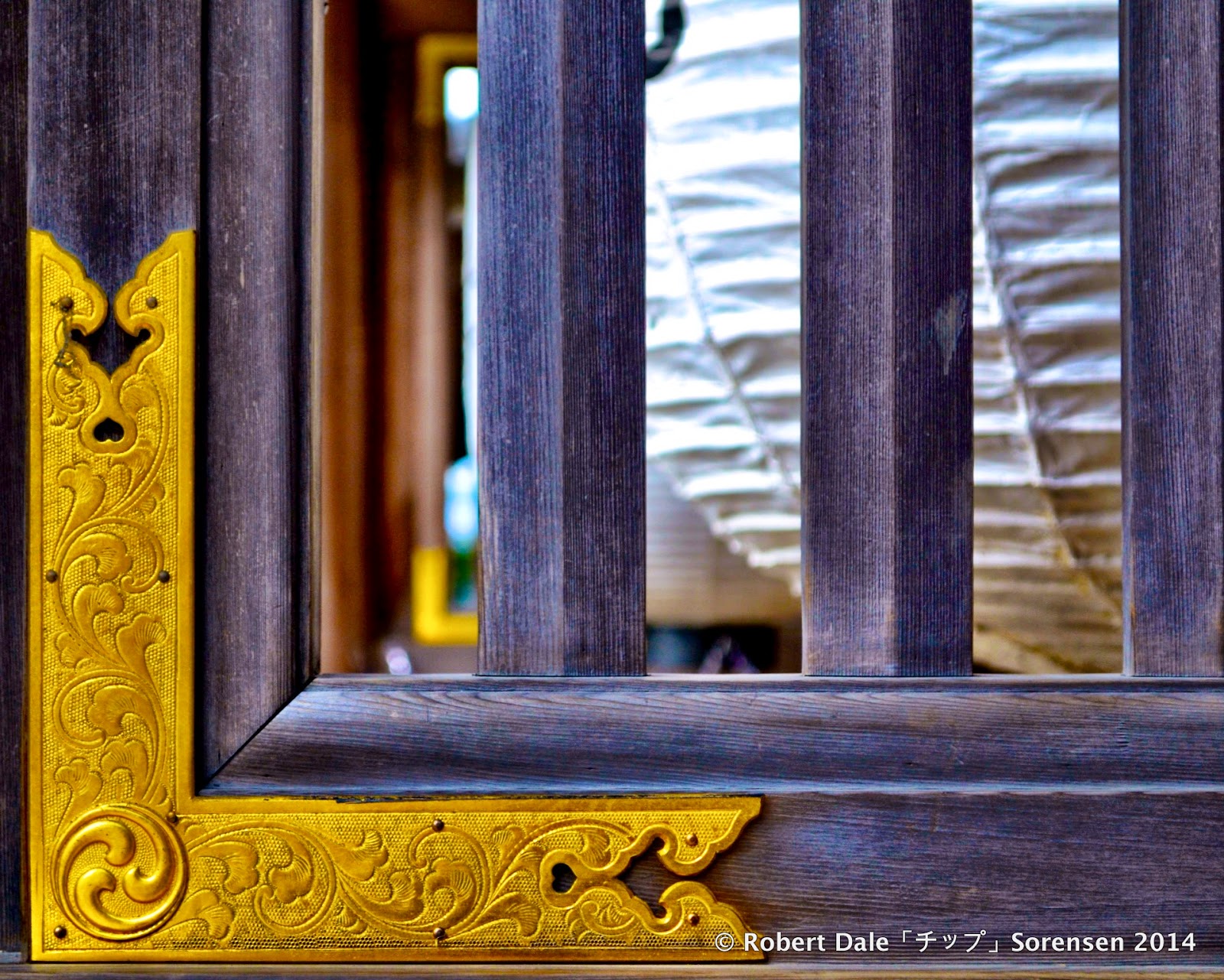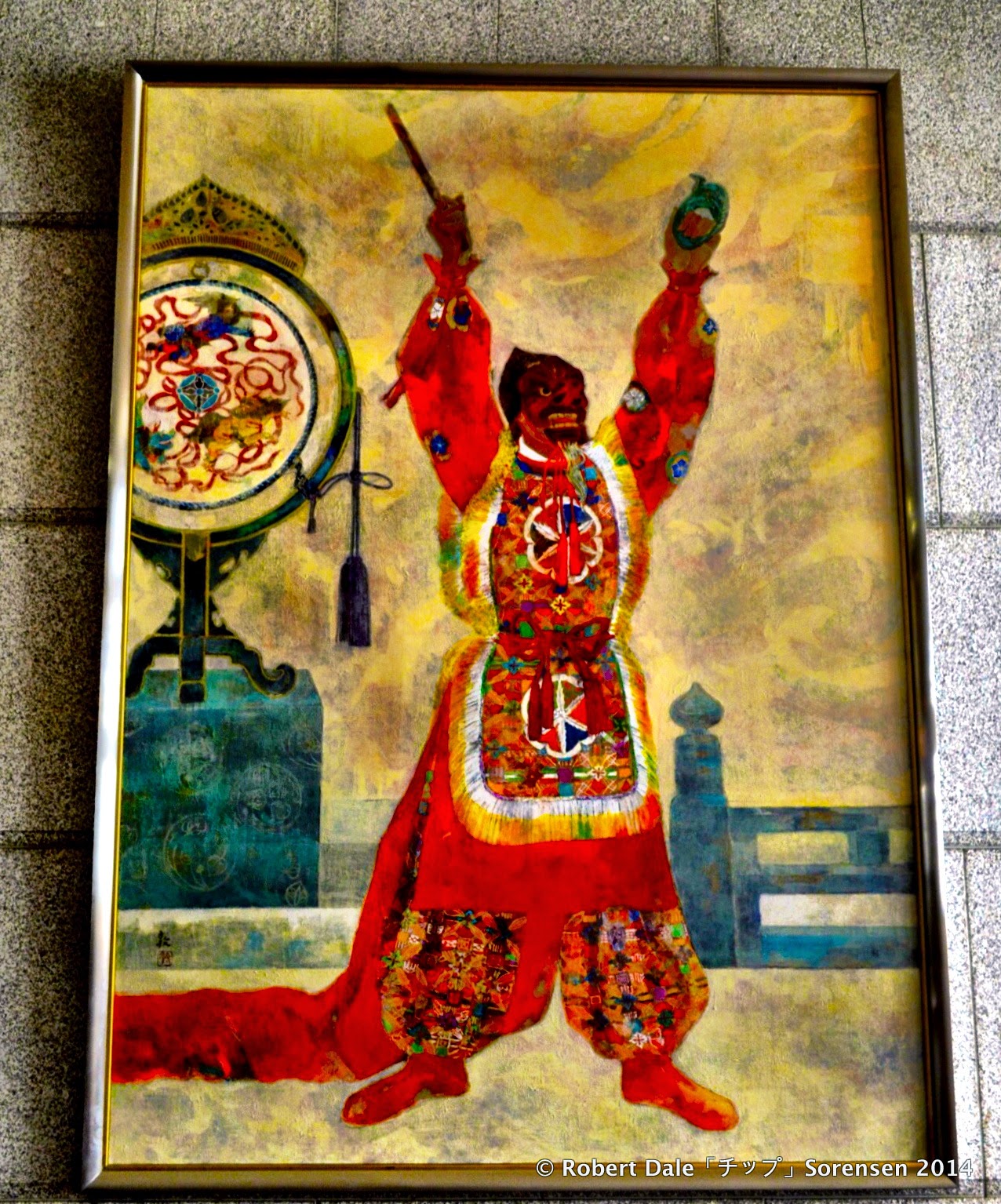As we entered the main worship hall, there was this huge window with wooden lattice work that lit up the stairwell as we went up to the second floor where the happoyoke (protection from various misfortunes) ceremony was held.
When I reached the top of the stairs this large real-life sized painting was hanging on the wall opposite of me. The colors reminded me of some traditional clothing worn by Mongolians. The design on the taiko drum on the left clearly has a Japanese origin however.
Since the New Year's holidays were just a month ago, we can still see these braided ropes with fortunes tied to them. Typically, if the fortune that you chose happened to have a low level of good luck or was outright unlucky, you can tie it to the rope and leave it at the shrine in hopes that the Kami (God) would dispel your fortune of bad luck.
One thing I like about Shinto shrines is the dedication or respect they show to object of nature, whether it be a huge tree, rock, etc. This braided rope is tied to this cedar tree, which signifies that the tree itself has a religious or spiritual significance. In some cases, the tree itself is the Kami.
Samukawa Shrine is quite popular during the New Year's holidays, so they have these ropes with bad-luck fortunes tied to them positioned as several locations among the shrine grounds. I like that they use natural fibers for the ropes and bamboo for the poles. No cheap nylon or plastic materials used here!
This is a wider shot of the main gate to the courtyard of the worship hall. Love this architecture and attention to minute details that most visitors tend to completely ignore. It's kind of sad, but maybe for most Japanese, anything less would be unnatural.
As is the case with most any shrine, there is a path either of cement, stone, or slabs or rock that lead directly to the front of the main worship hall where visitors pray for good luck, health, or offer their thanks, etc.
Unlike small shrines in my neighborhood, this shrine has a well established, fully staffed gift shop where you can buy good-luck charms and talismans for whatever desire you may have whether it be health, safe birth of child, safety while driving, passing an entrance exam, or whatever.
The administration offices for this shrine are also in the traditional design.








































